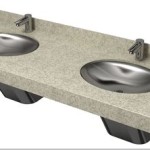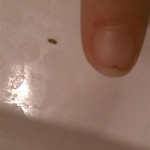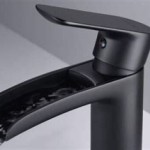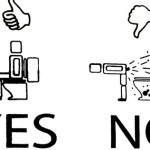How to Remove a Bathroom Fan Timer Switch
Replacing a bathroom fan timer switch is a common home improvement task that can improve functionality and aesthetics. Whether upgrading to a newer model, replacing a faulty switch, or reverting to a standard on/off switch, understanding the process is crucial for electrical safety and successful completion. This article provides a comprehensive guide to removing a bathroom fan timer switch, outlining the necessary steps, safety precautions, and tools required.
Before beginning any electrical work, safety must be the primary concern. Electrocution is a serious risk, and adhering to safety protocols is paramount. Proper planning, preparation, and execution are essential to completing this project safely and effectively. This guide assumes a basic understanding of electrical circuits and safety practices. If there is any doubt or uncertainty, consulting a qualified electrician is strongly recommended.
Essential Safety Precautions
Prioritizing safety before initiating any electrical work is non-negotiable. Several key precautions must be taken to minimize the risk of electrical shock and ensure a safe working environment.
The first and most critical step is to disconnect the power supply to the circuit. Locate the circuit breaker that controls the bathroom where the fan timer switch is located. Turn the breaker to the "OFF" position. To verify that the power is completely off, a non-contact voltage tester should be used. Hold the tester near the wires of the existing switch. If the tester indicates voltage, the correct breaker has not been deactivated.
Even after disconnecting the power, treat all wires as if they are live. Never assume that the power is off without verifying with a voltage tester. Maintain a safe distance from any exposed wires, and avoid touching them directly. Wear appropriate safety gear, including insulated rubber gloves and safety glasses. These measures will provide an additional layer of protection against accidental electrical contact.
Working in a well-lit area is also important. Adequate lighting ensures clear visibility of the wiring and components, reducing the risk of errors. A headlamp or flashlight can be helpful, especially when working in confined spaces or when natural light is insufficient. Finally, communicate with other household members that electrical work is in progress and that the circuit breaker should not be turned back on until the work is completed. This simple step can prevent accidental re-energizing of the circuit, which could lead to electric shock.
Tools and Materials Needed
Having the right tools readily available will streamline the removal process and improve the overall efficiency. The following tools and materials are typically required for this project.
A flat-head screwdriver and a Phillips-head screwdriver are essential for removing the switch plate and detaching the switch from the electrical box. The specific type of screwdriver needed will depend on the type of screws used in the existing installation. Wire strippers are necessary for safely removing the insulation from the wires to make connections, if needed. A non-contact voltage tester is indispensable for verifying that the power is off before touching any wires.
Electrical tape is used for insulating exposed wire ends, ensuring safe and secure connections. Wire connectors, such as wire nuts, are needed to join wires together. These provide a secure and insulated connection. Safety glasses are crucial for protecting the eyes from debris and accidental wire sparks. Insulated rubber gloves provide protection against electrical shock. Pliers can be helpful for gripping and manipulating wires, especially in tight spaces. A flashlight or headlamp ensures adequate lighting for clear visibility of the wiring and components.
Optional but recommended items include a digital multimeter for more precise testing of voltage and continuity, and a small notebook and pen for documenting the wiring configuration before disconnection. This documentation can be invaluable when installing a new switch or reverting to a standard switch.
Step-by-Step Removal Process
The actual removal process requires a systematic approach to ensure safety and accuracy. Following these steps carefully will help prevent errors and potential electrical hazards.
Begin by turning off the circuit breaker that controls the bathroom fan. Verify that the power is off using a non-contact voltage tester, as previously described. Remove the switch plate covering the timer switch. This is typically held in place by one or two screws, which can be removed with a screwdriver. Carefully detach the switch plate and set it aside.
Next, carefully remove the screws holding the timer switch to the electrical box. These screws are usually located at the top and bottom of the switch. Once the screws are removed, gently pull the switch away from the electrical box. Be careful not to yank the wires. Before disconnecting any wires, it is crucial to document the existing wiring configuration. Take a photo or draw a diagram showing which wires are connected to which terminals on the timer switch. This will be extremely helpful if a standard switch will be installed and for future reference.
One by one, disconnect the wires from the timer switch. If the wires are connected to the switch using screws, loosen the screws and pull the wires free. If the wires are connected using push-in terminals, use a small screwdriver to release the wires from the terminals. Ensure that the wires are disconnected cleanly, without damaging the wire insulation. After disconnecting each wire, immediately cap it with a wire nut or wrap it with electrical tape to prevent accidental contact. This is a critical step in ensuring safety.
Carefully push the wires back into the electrical box, ensuring they are neatly arranged and not tangled. At this point, the old timer switch has been successfully removed. If a replacement is not being immediately installed, consider covering the open electrical box with a blank plate for safety. If a standard switch is being installed, follow the instructions provided with the new switch, referencing the previously documented wiring configuration.

Replacing A Bath Fan Switch Electronic Timing Device Electrical

Installing A Bathroom Fan Timer Building Moxie

How To Replace A Normal Bathroom Fan Switch Timer

How To Replace A Normal Bathroom Fan Switch Timer

Installing A Bathroom Fan Timer Building Moxie

How To Replace A Normal Bathroom Fan Switch Timer

How To Replace A Normal Bathroom Fan Switch Timer

How To Install A Bathroom Fan Timer Switch My Place Is Home

How To Replace A Normal Bathroom Fan Switch Timer

How To Install A Bathroom Fan Timer Switch My Place Is Home
Related Posts







